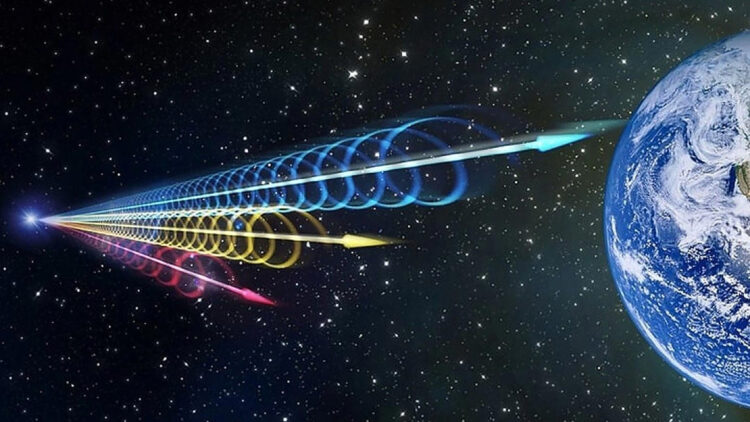The universe has spoken, and it has delivered a peculiar radio burst straight to Earth. This mysterious phenomenon, known as a fast radio burst (FRB), has fascinated astronomers since its first discovery in 2007. Recent findings from researchers at the Massachusetts Institute of Technology (MIT) have traced the origins of one such burst, revealing that it emerged from a magnetar’s magnetosphere located 200 million light-years away.
Deciphering the mystery of fast radio bursts
FRBs are brief yet powerful explosions of radio waves emitted by incredibly compact cosmic objects, such as neutron stars and potentially black holes. These bursts last only milliseconds yet can radiate energy surpassing that of entire galaxies. Although scientists have identified thousands of FRBs since the first detection, their precise origins and mechanisms remain largely a mystery.
In a recently published study, a team of astronomers from MIT concentrated on FRB 20221022A, detected in 2022 by the Canadian Hydrogen Intensity Mapping Experiment (CHIME). By analyzing the burst’s scintillation—akin to the twinkling of stars—they were able to establish that this particular FRB originated much closer to its source than previously thought.
Their research indicates that this FRB emanated from within 6,200 miles of a rotating neutron star, or magnetar, challenging earlier models that posited a more distant origin.
The important role of scintillation in scientific research
To investigate the source of FRB 20221022A, the team utilized scintillation, which occurs when light from a distant object passes through gas in space, causing it to twinkle.
By measuring the degree of scintillation, scientists can estimate how close or far an FRB’s source is. A smaller scintillation region indicates proximity to the emitting object, while a larger area would suggest a more distant origin, possibly linked to shockwaves.
Results showed that FRB 20221022A’s scintillation was strong, indicating that the burst originated from a highly compact area.
“Zooming into a [6,200-mile] region, from a distance of 200 million light years, is like being able to measure the width of a DNA helix, which is about two nanometers wide, on the surface of the moon,” says study co-author Kiyoshi Masui.
Magnetars: Implications for future research
Magnetars are a unique type of neutron star distinguished by extraordinarily powerful magnetic fields, which can be one thousand times stronger than those of ordinary neutron stars. Here, atoms cannot exist; they would be torn apart by the intense magnetic force. The MIT team’s findings offer the first solid evidence that FRBs can emerge from the magnetosphere of these highly magnetic objects.
“In these environments of neutron stars, the magnetic fields are really at the limits of what the universe can produce,” says lead author Kenzie Nimmo.
This discovery both clarifies the origin of FRB 20221022A and opens new avenues for understanding the diverse mechanisms behind the myriad of FRBs detected across the cosmos. The implications of this research are profound. As CHIME continues to detect multiple FRBs daily, the scintillation technique developed by the MIT team may prove invaluable in deciphering the various conditions under which these bursts occur.
“There may be a lot of diversity in how and where they occur, and this scintillation technique will be really useful in helping to disentangle the various physics that drive these bursts,” explains Masui.
And so, the mystery of fast radio bursts deepens as scientists uncover the mechanisms behind these cosmic enigmas. The identification of FRB 20221022A’s origin near a magnetar marks a notable advancement in astrophysics and boosts our knowledge of the universe’s complex and dynamic nature. As researchers continue to explore these phenomena, we may uncover even more secrets woven into the cosmic tapestry.

